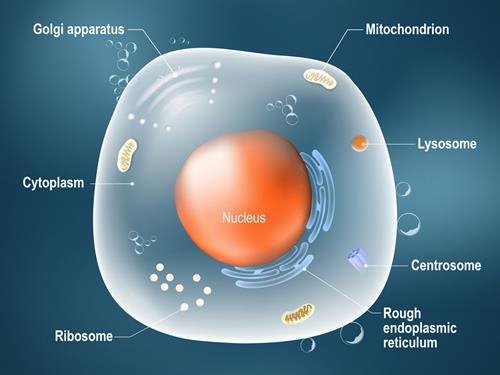
PUMPA - SMART LEARNING
எங்கள் ஆசிரியர்களுடன் 1-ஆன்-1 ஆலோசனை நேரத்தைப் பெறுங்கள். டாப்பர் ஆவதற்கு நாங்கள் பயிற்சி அளிப்போம்
Book Free DemoIf we consider the cell structure, it is bounded by a cell wall, plasma membrane and within these membranes cell organelles such as mitochondria, lysosome, ribosome, etc., are there. But these cell organelles are founded on a base structure which spreads across the cell called as cytoplasm.
The enormous region of a cell which encloses by its cell membrane is called as cytoplasm. It occupies the major part of the cell. It is a living component of cell, consist of jelly-like semi-fluid bulk of protoplasm with cell organelles. Nucleus is not a part of the cytoplasm. It contains many specialised cell organelles, each of which performs a specific function for the cell. All significant biochemical reactions take place in the cytoplasm.

Picture depicting the presence of cytoplasm inside a cell and how the organelles suspended in it
Cytoplasm has two major parts:
1. Cytosol (or) Ectoplasm
It is the fluid part of cytoplasm. It is like viscous liquid and contains several substances like water, ions, enzymes, carbohydrates, lipids and proteins.
2. Cell organelles (or) Endoplasm
Many organelles are present inside the cytoplasm.
Based on the membrane covering, organelles are classified into three types
- Membrane less organelles: Ribosomes
- Single membrane-bound organelles: Endoplasmic reticulum, Golgi apparatus, Lysosomes, Vacuoles.
- Double membrane-bound organelles: Mitochondria and plastids (both organelles contain their genetic material within themselves)
Important!
Functions of Cytoplasm:
1. It helps to exchange material through the cytoplasmic matrix.
2. It is the site of synthesis of a number of molecules like carbohydrates, proteins and lipids.
3. It acts as the site for specific metabolic pathways such as glycolysis (Glycolysis is the breakdown of complex sugar molecule into simple sugar molecule).
4. Most of the crucial cellular and enzymatic reactions like cellular respiration (The process of cell catabolism in which cells convert food into usable energy in the form of ATP (Adenosine triphosphate) and translation of mRNA into proteins takes place cytoplasm.